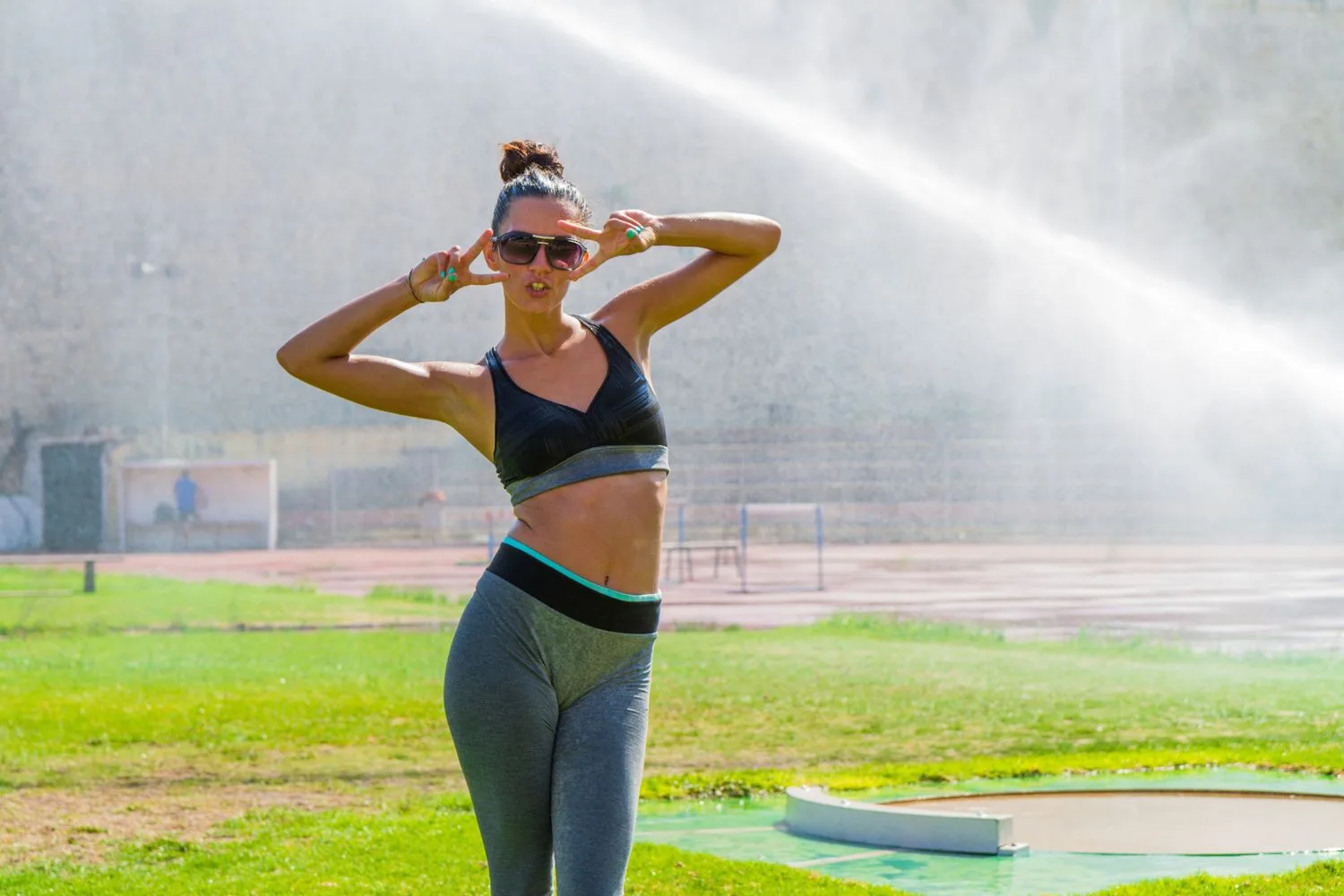Have you ever felt a sudden, strong urge to wee? You race to the loo, plant yourself and find… a mere dribble. Ten minutes later, the loo-p repeats. Or you find yourself automatically crossing your legs—and fingers—in hope you won’t leak when you cough, sneeze or laugh?
Welcome to the club. Urinary incontinence affects up to 38 per cent of Australian women, according to Continence Foundation of Australia, and of these, 70 per cent will not seek advice or treatment for the problem.
Why?
According to Sexologist Chantelle Otten, it’s because “no one is talking about it.” Pelvic Health Physiotherapist Chloe Cox agrees: “If we did talk about it, we could help a lot more people.”
So, let’s open the flood gates and start talking. Here, Chantelle and Chloe discuss the big and wee bladder leakage issues impacting many of us right now.
1. Wee leakage is a sign of a weak pelvic floor
True: “One of the most common signs of a weak pelvic floor is bladder leakage,” explains Chloe. “Other signs are bladder urgency, increased frequency, incomplete emptying of the bladder, and a decrease sensitivity during intercourse.”
Chantelle describes the pelvic floor as similar to a hammock’s cradle: “Like a hammock, the pelvic floor holds up a lot of your organs, and if it is not strong enough to support the bladder, it can result in bladder leakage.”

50 shades of incontinence
- Stress incontinence is when increased pressure inside the tummy presses on the bladder. This typically presents as leakage when coughing, laughing, or jumping occurs.
- Urge incontinence is characterised by a sudden urge to wee.
- Incontinence associated with chronic retention is where the bladder fails to empty properly and results in small leaks due to various factors.
- Functional incontinence is where physical, intellectual or other medical problems impact one’s ability to control bladder leakage.
2. There is nothing you can do about leakage – but carry a spare pair of undies
False: There are various strategies to prevent, manage and treat bladder leakage. The first step is to speak to a GP or medical expert. This will help identify the type of incontinence, the cause and from there, the most appropriate treatment.
Treatments can vary from pelvic floor strengthening exercises, to making lifestyle changes, such as weight management, diet, exercise and quitting smoking. On the upper end of the spectrum, medication and aides to support the bladder can help.
Usually, though, simple lifestyle changes and physiotherapy can often cure or improve the condition. “As a pelvic physiotherapist, I am trained to internally examine the pelvic floor,” explains Chloe. “We work with patients to develop targeted treatments.”

Pelvic floor exercises (keep up those Kegels!) are often the first port of call. “Muscle strengthening exercises can take 8-12 weeks for results, however we notice some symptoms change before then,” says Chloe. “If we are retraining coordination, results can be quicker, but there is no quick fix. It depends on which end of the scale you sit. There are also physio-based products like support pessaries, which act like a sports bra for your pelvic floor and help with leakage as well.”
And for day-to-day confidence? “Liners that contain charcoal are great because they can reduce up to 95 per cent of odour,” says Chloe. “Poise has some great options available.”
Poise Charcoal Odour Protection liners have a charcoal infused dual layer that helps neutralise odours – a 95% odour reduction (vs no liner). They are a 3-in-1 comfort, dryness and odour control liner.
3. Bladder leakage is a physical issue – not emotional
False: Bladder leakage can affect your confidence, social life, health habits and more. “Being self-conscious of leakage is a huge factor and cause for embarrassment for many women,” explains Chloe. “Shame, fear, not knowing how you can manage yourself when you are going out… these can all impact one’s confidence to engage in life fully. We often see a lack of participation in activities that a person might enjoy. For example, they might avoid going to the movies, because they don’t want to get up and down during the film to go to the toilet with urgency. People can isolate themselves, because if they go to a new environment they don’t know where the toilet is.”
4. Exercise makes bladder leakage worse
False: Chloe says some people stop doing exercise because they are concerned about bladder leakage, but it is essential for treatment. “Exercise can help with pelvic floor function and the hip mobility that activates the pelvic floor,” says Chloe. “We want to keep you doing activities, and exercising, while working on muscle strengthening treatments. But if you are suffering from bladder leakage during runs or jumping on the trampoline with the kids, you might need to modify your routine for a time while you work on strengthening your pelvic floor or down training.”
Remember, first step is to speak to your GP. Help is available. And treatment is often simple.




